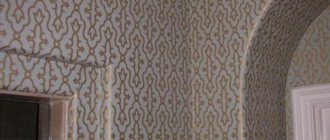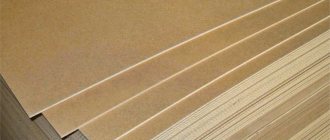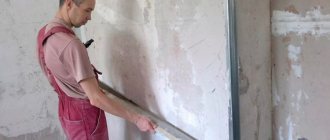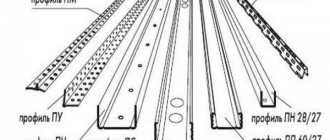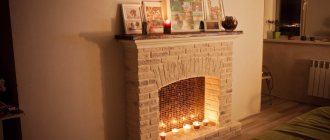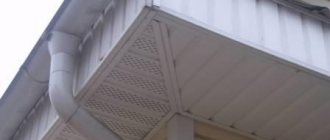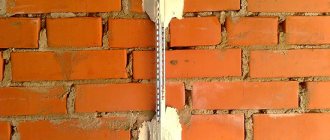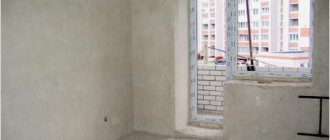Do it yourself
From circles
To make paper curtains for windows, you will need paraffin, cardboard, glue, a hole punch or scissors, thread, twine, a small saucepan (bowl) and a paint brush.
- We cut out the cardboard and measure out pieces of wallpaper of the same size. Using a brush, apply heated paraffin to the cardboard sheets, and before it hardens, glue the wallpaper to the cardboard. For a more uniform and reliable fastening, the workpiece should be ironed. It is advisable to do this through fabric. Then we do the same on the back side of the cardboard: apply paraffin, glue the wallpaper, smooth it.
- From the prepared material, cut out circles of arbitrary sizes (from 2 cm in diameter). This can be done using scissors or a hole punch designed for large holes. We string the resulting circles onto curtain threads of the desired length. We distribute the circles evenly along the entire length and fix them with glue. We attach the threads with circles to the common base-cornice.
- You can also use colored paper in combination with wallpaper. Contrasting or, conversely, matching in tone.
Roman
Thick vinyl wallpaper is best suited for this.
- In addition to wallpaper, you will need scissors, a ruler, glue, tape, decorative cord, an awl, buttons or decorative stops.
- We measure the window, add another quarter of the length to the desired length of future curtains (it will disappear in the folds).
- The wallpaper panels should be folded into an accordion (at least 3-4 cm), using pencil markings and making bends using a ruler. Unsightly folds will ruin the appearance of the product.
- It is recommended to glue the first folds to give strength.
- In the folds in the center of the panel we make neat, equally spaced holes through which the cord will pass. To prevent them from losing their shape, we reinforce them with tape.
- We pass a decorative cord through the holes, tying it with a knot at the top; the limiter at the bottom can be an ordinary button or some kind of decorative thing. The lace is brought out to the outside and fixed so that you can easily adjust the height.
- These curtains are secured to the frame with double-sided tape.
- The lower part of the panel is folded in half, and one part is fastened counter to the other, like a fluffy peacock's tail.
Curtain panels
Manufacturing instructions:
- we take wooden blocks with a cross-section of 3x3 cm and a length equal to the dimensions of the window, fasten them with corners and screws;
- cut out even strips from paper or vinyl wallpaper, adding 4 cm to the length of the frame;
- in the upper part of the panel we tighten the screws, leaving them unscrewed by 5-10 mm;
- We fix the cornice on the ceiling, make holes in it corresponding to the size of the screw heads;
- Having secured the screws in the holes, slightly move the panel to the side.
Roller blinds
The advantage of roller blinds is that they fit tightly to the window, providing maximum shading of the room.
When making such curtains, the wallpaper is not folded like an accordion; it is simply rolled into a tight roll. There is no need to make holes for the fixing cords.
- Manufacturing begins with determining the size of the window. The desired length is multiplied by 2 and another ¼ length is added to it for future pockets: the wallpaper will fold in half and acquire density and a double-sided attractive appearance.
- Wallpaper folded in half is glued together using glue or double-sided tape. At the ends the wallpaper is folded into pockets. For this it is better to use a stapler.
- We place weights in the resulting pockets - thin wooden or plastic strips. The tape is attached to the hidden side of the top pocket and runs down both sides.
- We fix the resulting roller blinds in the upper part of the frame, if necessary, open the window, roll up the curtain and grab it on both sides with a tape going down.
If you want to make your home unique, such curtains are the most budget-friendly option for transforming your home. It will take very little time to make them. You can involve children in such creative work and create unique exclusive products together with them.
It should be borne in mind that the folds of paper wallpaper are preserved even when the curtains are lowered: any pattern seems to be refracted. Therefore, you should not use wallpaper with images of people, animals, or fairy-tale creatures. Geometric patterns, marine themes, and floral prints are better suited for this.
Wallpaper curtains are original window decorations; they can be used not only in residential premises, but also on glazed loggias and balconies. Due to high humidity and fumes, paper curtains are not recommended for use in the kitchen. The low cost of the product allows you to change such curtains without any problems depending on the changing interior of your home, the time of year or even your mood.
Solar curtains will add brightness to the feeling, and subdued tones will soothe.
Such a cheap and at the same time original window decoration can be easily changed, allowing you to show inspiration and realize the most unexpected fantasies.
Detailed instructions for creating blinds from wallpaper are in the video below.
Paper blinds: getting to know the specifics of use and creation
In interior design, homemade curtains made from wallpaper look decent. They can decorate any room - kitchen, living room, children's room or dining room.
The accessory is light in weight and has modest dimensions, so its installation is not difficult. The costs of purchasing materials and accessories are minimal, which is also important for forward-thinking and rational home craftsmen.
It is best for them to rely on wallpaper with a dense texture, which is resistant to tearing and deformation, but at the same time transmits light well.
Their shade and print may vary. Blinds with a light, monochromatic canvas that does not have large geometric patterns or complex ornate designs that visually hide the space of the room and make the window overly catchy look a win-win.
DIY wallpaper blinds. Step-by-step instruction
The ability to do something with your own hands warms the heart of a thrifty housewife, saves money, and also protects from sun rays in winter and summer. Of course, if that “something” is paper blinds.
Despite the fact that few have heard of them, their scope of application is very wide: windows of country houses, verandas, balconies, loggias, rooms located on the sunny side, children's rooms. They are hung during renovations so as not to stain the curtains, and they are also an excellent option for those who do not yet have enough money to purchase regular blinds.
Such curtains look very original, and the money and time costs for them are minimal. I can’t recommend making them on long winter evenings, because anyone can make such blinds from wallpaper with their own hands in just a couple of hours.
To do this, you only need the following materials and tools: leftover wallpaper, scissors, hole punch/awl, ruler, meter, pencil, cord/satin ribbon to match the wallpaper, fixative, double-sided and regular tape, glue. It is better to choose wallpaper that is dense enough (non-woven wallpaper for painting is suitable), but transmits light, not too dark shades, without large patterns and not too variegated.
Classic options
Some people like blinds that look like those sold in stores. Their manufacture is in many ways similar to the process described above. The only difference is that the holes are not pierced in the middle, but on both sides, at the same distance. Two cords are threaded accordingly and fixed with a special device for adjustment.
Reliable wallpaper blinds for an apartment or house
The bottom edge is secured so that it does not break or bend. To do this, glue the cardboard from the wrong side. The weighting material will make the structure reliable.
Some people like blinds that look like those sold in stores.
See alsoDesigner things for decorating your home interior with your own hands
Master class: how to make blinds from wallpaper with your own hands
1. Measure the width and length of the glass to which the blinds will be attached.
2. 25% is added to the obtained length value, and the width remains unchanged. These are the dimensions of the blinds. The extra centimeters will go away when you fold the wallpaper like an accordion. The length of the ribbon/cord is taken with an allowance for tying bows and knots.
Expert opinion
Romanova Ksenia Petrovna
Interior design expert and fabric store manager
3. A rectangle of the given parameters is cut out from the remaining piece of rolled wallpaper. If the wallpaper is patterned or striped, make sure that the pattern is not distorted.
4. Fold the wallpaper like an accordion, and the folds should be within 3-5 cm, otherwise the appearance will deteriorate sharply. If everything is done correctly, then the end of one side will look like the letter “L” (this is the bottom of the curtain), and the other side will only get half – “/”.
5. On the folded accordion we determine the middle, in the place of which we make holes using a hole punch.
This useful tool is most often available only at the workplace, but at home it can be quite successfully replaced with an awl or screwdriver. We strengthen the resulting holes in the wallpaper on the back with tape, then punch the holes again.
If these blinds are needed for a short time, you don’t have to do this.
6. We insert a cord or ribbon into the resulting gap, and then straighten the blinds to determine the length of the rope. In this case, the upper end of the cord is fixed with a knot.
7. We glue double-sided tape along the entire width of the top step of the curtain, at the same time additionally securing the cord. This will be attached to the window. On the very bottom strip, at the bottom left, a piece slightly less than half is glued so that you can decorate the curtain.
8. The bottom is decorated with a “peacock tail”. To do this, the 5 lower folds are glued together and then secured with double-sided tape. In this case, the cord is brought out to the back side, the excess is cut off.
9. A fastener with one opening is put on the cord. To raise the curtains, you need to pull the fastener up, and to close the window with them, lower the fastening down along the cord. The end of the cord or rope can be decorated with a decorative large bead.
There are several versions of such curtains. You can also make them on two parallel cords, just like real blinds. The procedure for their manufacture is similar. Only in this case will you need a two-hole clamp.
Thus, making blinds from wallpaper with your own hands is not at all difficult. All that is required from the craftswoman is a few free hours and unnecessary wallpaper, which everyone who has gone through a renovation has.
Watch more in the video master classes below.
Expert opinion
Romanova Ksenia Petrovna
Interior design expert and fabric store manager
Step-by-step master classes
To create high-quality, neat blinds, follow the instructions step by step, take your time, and be especially careful in your measurements.
The advantage of homemade curtains is the lack of work with drawings.
Each variety has manufacturing features and requires an individual approach. Therefore, decide in advance what kind of curtains you would like to see on the windows.
Accordion blinds
To make blinds from wallpaper with slats bent like an accordion:
- Measure the window in length and width. Add a quarter of the material from the length of the window to the length of your curtains. Otherwise, when folded like an accordion, the curtains will be a quarter shorter.
- Carefully measure the length of the rope according to the length of the curtain.
- Give the piece a pleated look. To do this, measure the strips (it is better if they are from 3 to 5 cm, then the blinds will look elegant and neat.). Make sure that the slats are the same shape. Bend them into an accordion shape.
- If you want to thread the rope along the fabric, use an awl to make a row of holes in the middle of the curtain and insert the lace. You can insert two laces by making holes on the sides.
- Attach the top end of the cord by tying a knot or using tape. If you used two cords, connect them using a clamp, placing a bead at the end or tying a knot.
To make your blinds look three-dimensional, you can increase the width of the slats. This will make the blinds look massive and stylish.
Roller blind
For this option, you will need a tube to secure the curtains. It is best to make blinds from non-woven wallpaper. To make roller blinds, use step-by-step instructions:
- Attach double-sided tape along the entire length of the tube.
- Fix the inside of the curtain to the pipe. Screw the fabric onto the pipe until the very end. Try to roll the wallpaper very tightly.
- Bend the lower end of the fabric by about 5–10 mm, depending on the width of the weight. Insert a weight bar into the resulting groove. Use a weight exactly the width of the blind.
- Insert a mechanism into the pipe to adjust the blinds. Secure the mechanism with a rope or chain at the top of the window. Use double-sided tape or self-tapping screws for this. Or, as shown in the picture, secure the hooks to the top of the curtain by threading the cords through them.
You can learn more about this from the video:
DIY wallpaper blinds\We make roller blinds from wallpaper with our own hands
Fan blinds (peacock tail)
Fan blinds involve steps similar to making accordion blinds. The difference lies in the rounded end of the curtain, reminiscent of a peacock's tail. To make curtains, follow the instructions:
Learn more about this from the master class:
How to make blinds from wallpaper Master class from Angelina Bykova
Blinds made from newspaper tubes
A newspaper is a universal thing in everyday life. Another interesting use for it is making curtains.
To create curtains, follow these steps:
If you do not understand the technology of making curtains from newspaper tubes well, refer to the video MK:
Weaving from newspapers. Blinds. Master Class.
Curtains made from paper clips
To create curtains from paper clips, you can use different threads, leftover wallpaper, magazines, old postcards, and corrugated paper.
This type of curtain looks very original and catchy, due to the sparkling clips. The curtain is considered a good idea for the cottage and garden because of the ease and convenience with which it can be pulled back.
Its production is as follows:
A creative solution would be to secure the threads to some kind of wooden stick. You can use thread instead of paper. To keep the curtain beautiful and sparkling for a long time, you can coat it with glossy varnish.
The author's imagination in this manufacturing option is not limited.
DIY pleated blinds made from wallpaper
First of all, you need to decide what kind of wallpaper to make the product from. They should be strong, but not too thick. You need to pay attention to their pattern so that it harmonizes in color with the curtains and room furniture. An interesting option is when they are made from the same wallpaper that the room is covered with.
First way
- a roll of paper wallpaper with a length of at least 1500 mm;
- scissors;
- meter ruler and pencil;
- cord 1.5-2 mm thick;
- awl;
- double sided tape;
- knife;
- retainer;
- decorative tape.
It is more convenient to work over a large area. We cut a strip of wallpaper to the required size, lay it out on the table, and place weights at the ends so that the roll does not curl up.
The strip needs to be folded into an accordion 3-15 cm long. To make the accordion neat, you need to draw the wallpaper along a ruler. First, place dots at the selected width on both sides of the piece. Then connect them using a ruler. In childhood, many people made toys by folding paper like an accordion, so the process is clear to everyone.
We make the first folds using the edge of a ruler. Apply a ruler to the line and bend it. Using the side of the scissors or a blunt knife, we draw along the fold line so that it is clear and fixed.
The next step is to thread the cord into the holes using a large needle or hook. Its ends need to be melted, the lower edge secured in a clamp, you can buy it or cut it from an old jacket. It is needed to ensure that the curtains remain at the desired length.
At this point you can finish making them by decorating them with a satin ribbon and tying a bow from it. The bottom of the curtain will be straight and horizontal.
You can finish the blinds with a peacock tail. If a rope is threaded in the middle, then the opposite ends are connected together and glued, you get a beautiful fan.
If there is no need to close the entire window, but you need to shade part of the room, then we make a fan of the required size and close part of the window. We attach wallpaper blinds to the window with double-sided tape, it can withstand up to 3 kg.
You can make another homemade fastening - then glue a strip of thick cardboard to the last accordion, use nails or other fastening material.
Second way
- The wallpaper must be cut into strips using a 100 mm tire.
- The strips are twisted and glued into tubes; their number should be sufficient to cover the entire window.
- After drying, the tubes are compressed into a flat lamella with clear ribs, and the gluing area is placed at the top in the middle.
- The tubes are coated in the middle with glue and glued on top of each other in a high stack. To avoid glue smearing and leakage, dry glue is used.
- After complete drying, holes are made at a distance of 15 cm. Ropes are passed through them, the lower ends of which are clamped with a clamp. Thanks to these cords, the blinds can be lowered and raised.
- They are attached to two plastic rings and hung on nails driven into the window frame. Or simply glue it with double-sided tape.
Roller blinds: step-by-step DIY instructions
Roller blinds or roller blinds. How to make them yourself? This method is the easiest. There is no need to fold the wallpaper into an accordion, no need to pierce holes and pull the cord through them.
You need to measure a piece of wallpaper twice the length of the window plus another quarter:
- The cut piece is folded in half for strength, and glued at the ends with glue or double-sided tape.
- At the edges, pockets are folded back and stapled. Weights - wooden strips - are threaded through them.
- A tape measuring two lengths of the curtains is attached to the top pocket. Spreads over both sides.
- The blinds are glued to the window with tape. They are made the same way, you can only take a different number of tapes holding the roll. You can take one wide ribbon, strengthen it in the middle, unfold the curtain to the desired length and tie a beautiful bow. Or tie two ribbons on the sides of the roll in a bow at the same height from the window sill. Roller blinds are ready.
Master class on making blinds from newspapers
The manufacturing process of this type is the most complex and most time-consuming.
- newspapers;
- beautiful cord;
- two plastic rings;
- rope;
- Crochet hook;
- paints, brushes for painting newspaper tubes.
For blinds on a standard window you need to screw up to 200 newspaper tubes 400 mm long. Long tubes can be trimmed as you work.
Master class: a newspaper is wound onto a thin metal rod, usually a knitting needle is used. A piece of newspaper is wrapped around it and the edge is glued. All tubes should dry well. Then they are painted with acrylic paint. It is recommended to add 3 to 1 PVA glue.
After painting and drying, the most crucial moment comes. A large number of small round tubes need to be connected into a durable fabric.
The first connection method: fasten the tubes by intertwining them with rope, making one or two knots at a time. It is advisable to lubricate each node with glue for greater strength.
You need to start from the top side of the curtain. The rope should be almost twice as long as the curtain.
We tie the upper end to a plastic ring. Now you need to intertwine both ends of the cord from the inside and outside.
At the bottom, the cord is tied into a knot; we coat it with glue for strength. Lay out the canvas on a flat surface and align the tubes, cutting off any that are too long.
Drive nails or special hooks into the window frame. It is easy to hang the canvas on them using plastic rings. In any case, the curtains are easy to remove on a cloudy or rainy day.
In order not to completely remove the blinds, you can take a beautiful satin ribbon, fasten it on top and lower the curtains on both sides. At the bottom at the desired height, tie the ribbons into a knot and tie a beautiful bow. These homemade curtains are a variant of roller blinds.
Double-layer paper curtains with an air gap: step-by-step instructions
This option is a little more complicated than previous models, which means it will take a little more time and effort than regular pleated. But such a product looks more stylish and respectable, and it also reliably protects the room from heat.
To make double-layer blinds, the wallpaper must first be marked and then cut into strips about 10 cm wide. The cut strips must be rolled into a tube and the edges glued together by 1 cm. There should be such a number of these tubes as to cover the entire height of the window.
When the glue dries, the tube must be pressed against a flat lamella so that the ribs are clearly formed on the sides of the part. You need to fold it so that the sizing area is in the middle of the top side.
Next, the middle line of each lamella is smeared with glue with a strip of about 1 cm, then all the elements are connected to each other. The glue should not spread during operation, so it is better to use dry glue. Leave the stack of glued tubes until completely dry. Only then can the resulting structure be expanded.
Double-layer paper curtains with an air gap are a more complex option, but they look much more impressive.
15 cm from the edges, using an awl or other similar tool, you need to make holes through which the cord is passed. It will not be visible from the outside, since it will pass through the edges of the ropes inside.
These air blinds can be hung using two rings tied to the upper ends of a rope. They are hung on hooks that are screwed into the upper slope of the window opening. In the case of plastic windows, you should use double-sided tape, since the curtain made is very light.
Blinds repair
Expert opinion
Romanova Ksenia Petrovna
Interior design expert and fabric store manager
Old faded plastic, paper or wooden blinds can be restored with wallpaper. You need to choose wallpaper that will best suit the interior of the apartment, enliven and decorate it.
On old curtains we measure the width, length and number of slats. We draw the same stripes on a roll of wallpaper. We mark the locations of the holes in the old blinds so that we can make cuts later. We cut out the strips and glue them onto the old slats. At the holes we cut into three parts. We try to glue one by one without disturbing the wallpaper pattern.
We try them on the windows and admire the updated curtains.
Office blinds for home use
But what if you have those plastic blinds that come with your offices, but you’re not happy with their boring appearance? This situation can also be easily corrected by giving them an image close to the interior of the room. Measure the length, width and number of lamellas. Then cut off strips of the selected wallpaper. Note that in order for them to turn out neat, you will have to cut off the strips at the holes in order to stick them both neatly. The strips are cut into three parts, observing the sequence of the pattern, and they are glued onto the lamellas. To avoid confusion, it is convenient to number them on the reverse side. Even if the gluing turns out to be a little uneven, you should not be upset, as it may not be noticeable. New blinds are ready!
Window decor in the living room with white wallpaper blinds
How to make curtains-blinds from wallpaper with your own hands, other options
If there are small pieces of white wallpaper left, we recommend making curtains with your own hands using the weaving technique. This technique originated in Ukraine, and is now used everywhere. Patterns are cut out of paper. The result is paper lace that looks good on the window day and night.
To make such a paper curtain, you will need knives, scissors, a wooden mat, and patterns. On the Internet you can always find tips on this option for making blinds with your own hands from wallpaper step by step and photos of patterns for cutting. With skill, diligence, patience and accuracy, real works of art are obtained.
Blinds are a practical item in home decoration. They protect people and environments from the sun's harmful rays. In addition, these are not only useful, but also beautiful things in the interior.
Self-made curtains attract attention because they are no worse than purchased ones, exist in only one copy and make the apartment unique. In addition, they make it possible not to throw away the remains of wallpaper, but to use them to make necessary and beautiful things.
More about the advantages
Much has already been said about the advantages of parts made independently. But there are a few more points that make them stand out from other window installation options.
Wallpaper blinds for unusual apartment decor
- Versatility. Even during renovation work, DIY wallpaper blinds are necessary, as they help protect windows from dust and dirt.
- Lightproof. If desired, complete impenetrability is achieved so that natural light remains outside the room.
- New. Many people are tired of curtains with a boring look. Blinds bring freshness and renewal.
Small window in the kitchen with blinds made of white wallpaper
- They are made by hand to fit different windows. Therefore, no matter what the window is, there is an independent solution.
- Saving money is an important point. No additional investments are required, since they use the remnants of wallpaper from renovation.
- Perfect option. If the window of the room is on the side where direct rays of the sun constantly fall, then this solution will be the best.
Decorate your room with colorful wallpaper blinds
Advantages and disadvantages of paper options
Today, curtains, curtains, and blinds are usually hung on windows. For those who want to stand out and decorate their room in an original way, it makes sense to make blinds from wallpaper and fabric at home with your own hands.
It is worth noting that paper curtains have their disadvantages and advantages. Therefore, to understand whether such a product is really worth making, you need to understand all the pros and cons.
The advantages of using paper curtains are presented below:
- Availability. To make such blinds, you do not need to buy additional tools and materials.
- Ease of manufacture.
- Blinds made from leftover old wallpaper look good either alone or in combination with fabric curtains.
- Wallpaper curtains look presentable on windows of any size. All thanks to the fact that their length and width are easy to adjust.
- The product adheres well to metal surfaces and plastic.
DIY paper blinds are indispensable during long moves and repairs. After all, if such a craft is damaged, there is no shame in throwing it away. Making new curtains is not difficult.
This is an ideal option for cottages and balconies from spring to summer. Bright sunlight causes expensive fabric curtains to fade. It is much more convenient and economical to protect the room from excess sun with curtains made from wallpaper.
The disadvantages of paper blinds include the following:
Impossibility of cleaning from dirt and dust without damaging the product.- Short service life. Such curtains fade within a few months and lose their presentable shape.
- If the window opening is wide and high, adjusting the curtains will be a little difficult.
Minuses
Having considered so many advantages of a homemade part, let’s dwell on the disadvantages. They are not that significant. The main thing is the remaining tape on the painted surface and possible difficulties during fixation.
Large window with wallpaper blinds
To ensure that the part lies flat, tape is first attached to the window. Only then are the blinds placed. It is inconvenient to do this work alone and is unlikely to do without mistakes.
If remnants of tape remain on the windows, remove them with 70% medical alcohol. To do this, blot the cotton wool and wipe the problem area.
The main thing is the remaining tape on the painted surface and possible difficulties during fixation.
See also: Making Easter decor with your own hands
What is needed to make blinds?
Anyone can make paper blinds from a photo. This does not require special knowledge or large financial costs. But before you start work, you need to prepare everything you need.
To create an original version of curtains you will need:
- Roll wallpaper left over after apartment renovation.
- Awl or hole punch.
- Scissors or utility knife.
- Ruler 50 centimeters long.
- Two cords that are slightly longer than the height of the window.
- Double-sided tape.
- Latch.
- Strong thread or braid.
- Pencil.
The width of the wallpaper can be 55 centimeters or a meter. The choice largely depends on the window parameters.
If the window is wide, then it is better to take a couple of rolls 55 centimeters long. As for the material, any paper will do.
Expert opinion
Romanova Ksenia Petrovna
Interior design expert and fabric store manager
But curtains made from non-woven wallpaper will last the longest. It is also allowed to take wallpaper for painting.
Then you can put some interesting design on them.
Dark colors do not transmit daylight well and create twilight in the room. Also read the article: Design for beginners: DIY curtains for the kitchen.
Paper blinds: simplicity and affordability
As a rule, it is easiest to make blinds from wallpaper. This will take the least amount of time. Wallpaper is best suited for crafts, as the wallpaper fabric is made of durable impregnated paper.
Important! Wallpaper does not let light through, so homemade blinds will fully perform their main function of sun protection.
If you haven’t done any renovations, but want to update something or just refresh the interior of your apartment, you can also purchase wallpaper in the color that you like best and matches the overall style of the apartment.
Alternative blind options
There are many alternative options for blinds that are easy to make with your own hands. For example, you can decorate a window with beads.
A beaded curtain will create a pleasant atmosphere in the room. Any material is suitable: shells, pieces of plastic and glass, natural stones, large beads.
It all depends on the taste preferences and budget of the apartment owner.
An interesting option would be to stick photo wallpaper on the window. In a studio or recreation room, it makes sense to attach a map to the window using double-sided tape or glue. Canvas is thicker and more durable than paper. Therefore, it will provide reliable protection for the room from excess sunlight.
If the window is small, you can create an original curtain with your own hands from long strips of fabric. To do this, hang a small cornice and install a clamp in the corners of the frame. Then the fabric material is hung. Each strip is secured with a clamp. This option is ideal for decorating a bedroom.
An interesting way to decorate a window with your own hands is to use lace patches. For this you need lace napkins and paints.
The napkins need to be sewn with nylon thread or joined together using an adhesive mixture. Loops are made at the top to hang the curtain on the cornice.
The size of the structure, its color and shape are chosen at the discretion of the owner of the house.
Instead of standard curtains, you can decorate the window with stickers. The film is sold in any specialized store and is available in different colors. The product is easy to install and, if necessary, can be easily removed with plain water.
Thus, if you don’t want to hang standard curtains, curtains or blinds on the window, but want to add originality to the interior of the room, then you should make your own blinds from leftover wallpaper. There are different options for creating such a craft. In any case, such a product is simple to make and does not require any additional financial investments.
The truth has the only drawback - a short service life. Paper curtains last for 3 months.
But this is quite enough to protect the room from the hot sun in the summer. Watch a video on the topic below.
What should I use?
Do you want to transfer your fantasies into the real world, but don’t know how to make curtains from a material such as paper? Then we will help you with this. Initially, you need to prepare the paper from which you are going to make decorations for window openings. I think it’s clear that you need to take thick and bright paper, and not ordinary leaves. This material can be used to make curtains of any shape and design. That is why even inexperienced housewives will be able to experiment with such material and make beautiful interior details, regardless of the complexity of the planned model.
Horizontal corrugated curtains are very popular at the moment - such elements will simply visually expand not only the window itself, but also the entire space of the room. Another argument for using corrugated paper is the fact that it is very resistant to exposure to sunlight. Such elements will be bright and beautiful for a long time; they are indeed even stronger than some fabrics intended for sewing curtains, and are better able to withstand ultraviolet exposure.
But if the apartment owners need such curtains for a short period of time, then it is best to take the really cheapest paper of the required color. You can use ordinary wallpaper as a basis, which you may still have after repair work.
But, in addition to the main element, paper, you will also need to prepare the following material:
- strong cord or thread;
- glue;
- awl;
- small blocks or planks of wood.
But for the Roman version of curtains, you will also need to add cardboard, as well as wax.
wallpaper blinds
Then we stretch a rope into these holes to make a lifting mechanism:
We fix this rope at the upper end of the blinds, and fix it from the inside with double-sided tape:
We lay the lower edge of the blinds in a “peacock tail”, folding several folds (I got 8 of them) in half, and fixing them with glue on both sides of the punctured hole, so as not to glue the lifting mechanism:
Now we attach the clamp to the rope, thread the end cap through it, tie a knot, and close the end cap. You can do without a limit switch, simply tying a knot at the end of the rope so that the latch does not accidentally come off:
How to make a Roman blind?
In addition to classic models, you can make a paper Roman blind. Its design is in many ways similar to a sail: to raise the lower edge, you need to pull the rope.
The manufacturing process will look like this:
- An accordion is made from paper (for example, from wallpaper). The width of the strips should be about 3 cm.
- When the accordion is assembled and has been lying in stationery clamps or under a press for some time, you need to drill holes in it with a drill with a thin drill bit (3–4 mm). Holes are drilled at the same distance from both ends of the workpiece.
- Threads are threaded through the holes. It is better to use thin hemp or polystyrene ropes. A knot is tied at the top (so that the thread does not fall through) or the end is glued to the paper. An allowance of several centimeters is left at the bottom.
- The curtain is attached to the window with double-sided tape. The lower ends of the ropes are tied together, fixing the desired length. To lower the curtain, you just need to untie the knot. You can use a clamp to keep the ends from coming apart.
If desired, the upper end can be strengthened with a bar, providing not only two end threads, but also a third tension thread, by pulling which you can raise the curtain. Then you will additionally need a block - for example, a smooth plastic or wooden ring attached to a bar through which the thread will slide.
Blinds are an alternative to massive fabric curtains. They are convenient to use, easy to clean and care for, and suit any interior style. On our website you will find articles about the types and independent production and repair of vertical, horizontal, roller blinds, learn about the most common causes of failure, as well as how to straighten and shorten in length and width.
Folding paper blinds are a good addition to the interior , which is easy to make with your own hands. Even the most complex option - curtains made from newspaper tubes - is much simpler than fabric or bamboo curtains. They look very beautiful in the interior and will last quite a long time.
History of occurrence and types of blinds
Blinds owe their appearance to the Indians of the West Indies. The first type of blinds is colonial.
It is characterized by the presence of shutters with sloping wooden slats. They reliably protect from the sun and have the special advantage of being low cost.
In temperate climates, Venetian blinds began to be made in the 18th century. Their design is characterized by the fact that the inner long sides are fixed in the frame with hinges, and the outer ones with a cord, thus making it possible to adjust the tilt of the lamps depending on the weather and time of year.
Types of blinds differ in design depending on the climate zone and the material from which they are made.
Types of blinds as they appear:
- Horizontal;
- Vertical.
The complex mechanism of blinds with separate lamps often breaks down. Even the most expensive curtains are not immune from them. Therefore, the advantage of homemade blinds is the simplicity and reliability of the mechanism.
The most popular types of blinds
Each type of blinds has a different design, materials and different adjustment methods. Knowing the advantages and disadvantages of each, you can choose the most convenient and suitable type.
The most popular types:
- Vertical blinds are curtains in which strips of material called slats are arranged vertically and can be rotated at the desired angle. These blinds are adjustable using a cord.
- Horizontal blinds – characterized by a system called “ladder”. The slats are arranged horizontally. The slats are adjusted using a special drum.
- Roller blinds are a fabric sheet that is rolled into a roll using a special mechanism.
- Pleated blinds are a canvas made of fabric folded in the shape of an accordion. They are adjusted using special cords and threads, at the ends of which clamps are attached.
When choosing a certain type of blinds, you should pay attention to the shape of the windows, the material from which the curtains are made, and ease of adjustment.
How to make blinds at home
In order not to be distracted by trips to stores and make mistakes during the manufacturing process, immediately familiarize yourself with the principle of operation. Prepare all the tools in advance.
If you doubt you can handle it alone, call for help. Take all the necessary measurements and start creating original roller blinds that will delight you for at least a year.
Tools and materials
Most likely you will find all the materials at home, and you won’t have to go to the store:
- Wallpaper. You can use leftover wallpaper or buy new ones. The wallpaper material is dense, so it is perfect as a sun protection mechanism.
- A meter ruler, a centimeter, a pencil will be needed for measurements.
- Sharp scissors, stationery knife.
- An awl to make holes. You can replace it with another sharp object, such as a hole punch.
- String, rope or decorative tape if you want to decorate your blinds.
- A clamp to secure the blinds. An item of clothing that is often found on the hood cords of a sweatshirt can be used as a fastener. In addition, the retainer can be replaced with a small clothespin that matches the color of the wallpaper or the overall style of the room.
- Double sided tape.
- Glue.
Roller blind size
Once you have collected all the necessary equipment, start measuring the window and curtain. Measure the length and width of the glass to which you plan to attach the blinds.
The width of the curtain will be the same as that of the window, but the length should be different - additional centimeters are needed to form folds. To do this, add a quarter of this number to the resulting glass length.
For example, if the length of the window is 1000 mm, then add another 250 mm - this will be the length of your canvas.
Disadvantages of homemade blinds
The main disadvantages of homemade blinds made from wallpaper are the remains of adhesive tape on the paint, as well as difficulties in fixing them.
In order to glue the blinds evenly, you should first stick the tape on the window, and only then attach the blinds. In any case, it will be difficult without outside help, since it is important to do this work carefully and evenly.
Keep in mind that the product will need to be attached to the top of the window - this is the main inconvenience, so it is better to ask your loved ones for help: it will be difficult to cope alone.
If there is tape left on the window, you can try to remove it using cotton wool or a cotton pad that has been soaked in vodka or a 70% solution of medical alcohol.
Accessories for roller blinds
Correctly selected fittings will make the curtain easy to use and create an attractive appearance. As accessories you can choose:
- Runners, hooks. Economical, simple option for the kitchen. You will not have any problems with choosing sliders - they are all the same in terms of the method of fastening. All you have to do is decide on the appearance.
- Brackets, chains. The chain mechanism is very easy to use and is popular. Brackets are a durable structure onto which the shaft is mounted. If the blinds are made of thick wallpaper, then it is better to choose long brackets.
- Ropes. The rope mechanism is inexpensive and easy to implement: to do this, sew rings to the side panels and pass threads through them. Attach them to the bottom of the curtain.
- Weights. Serves as a weighting agent. Such a decorative accessory will allow you to emphasize the entire roll structure. All models have different colors, shapes, sizes, and styles, so you can choose the appropriate option for your blinds.
- Additional accessories: handles, decorative strips, other parts.
Types of mechanisms
There are two types of fastening roller blinds: open and closed:
- When the type is open, the cassette shaft on which the web is wound is visible. The shaft is mounted between two holders. This type of mechanism will allow you to fix the curtains above the window opening and in the opening itself. Wallpaper curtains can be controlled using a spring mechanism or a chain. Double-sided tape can serve as a fixation. The disadvantage of this design is that the adhesive layer can melt during the heat. Therefore, it is better to use self-tapping screws or self-tapping screws. The open type of fastening is a budget option that is available to anyone.
- The closed type differs from the first by the presence of a box that masks the cassette shaft, protects it from dust and dirt, and gives the structure a neat appearance. This system is suitable for plastic, wooden and aluminum windows. The system can only be mounted with an inclination of 15°. The closed type of mechanism is more difficult to implement and more expensive than the open type. Installation is carried out by drilling the frame. The control method can be using a chain, a spring mechanism or an electric drive. The latter allows you to adjust the level of illumination remotely using the remote control.
Roller blinds
This option can also be implemented. Of course, any wallpaper will be suitable for this. But if suitable ones are selected, measurements are taken and material is taken twice as long: for both sides. They are glued from the inside out and one pocket is made on the top side, and another on the bottom. A strap is attached to the frame and threaded into the pocket. A strip is inserted into the bottom pocket. A prepared braid or ribbon is thrown over the top. It is fixed at the top. When raised, the curtains are wound onto the bottom rail and fixed at the selected height.
Wallpaper blinds with classic patterns for the bedroom
See alsoHow to decorate your home interior with artificial flowers
